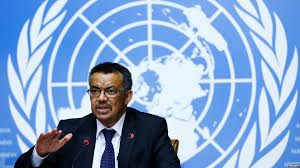By Ahsan Ahsan
The World Health Organization (WHO) has called on governments and health care leaders to address persistent threats to the health and safety of health workers and patients. This is contained in a news statement on the 17th September to mark the World Patient Safety Day.
“The COVID-19 pandemic has reminded all of us of the vital role health workers play to relieve suffering and save lives,…..No country, hospital or clinic can keep its patients safe unless it keeps its health workers safe. WHO’s Health Worker Safety Charter is a step towards ensuring that health workers have the safe working conditions, the training, the pay, and the respect they deserve.” said Dr Tedros Adhanom Ghebreyesus, WHO Director-General.
The Charter, released to mark the day for World Patient Safety Day, calls on governments and those running health services at local levels to take five actions to better protect health workers. These include steps to protect health workers from violence; to improve their mental health; to protect them from physical and biological hazards; to advance national programmes for health worker safety, and to connect health worker safety policies to existing patient safety policies.
The news statement also emphasized that COVID-19 has exposed health workers and their families to unprecedented levels of risk. Although not representative, data from many countries across WHO regions indicate that COVID-19 infections among health workers are far greater than those in the general population. While health workers represent less than 3% of the population in the large majority of countries and less than 2% in almost all low- and middle-income countries, around 14% of COVID-19 cases reported to WHO are among health workers. In some countries, the proportion can be as high as 35%. However, data availability and quality are limited, and it is not possible to establish whether health workers were infected in the workplace or in community settings. Thousands of health workers infected with COVID-19 have lost their lives worldwide.

In addition to physical risks, the pandemic has placed extraordinary levels of psychological stress on health workers exposed to high-demand settings for long hours, living in constant fear of disease exposure while separated from family and facing social stigmatization. Before COVID-19 hit, medical professionals were already at higher risk of suicide in all parts of the world.
On World Patient Safety Day, WHO has reminded governments that they have a legal and moral responsibility to ensure the health, safety and wellbeing of health workers. The Organization’s health worker charter has called on all Member States and relevant stakeholders to take steps to:
- Establish synergies between health worker safety and patient safety policies and strategies:
- Develop and implement national programmes for occupational health and safety of health workers:
- Protect health workers from violence in the workplace
- Improve mental health and psychological well-being
- Protect health workers from physical and biological hazards which covers also ensuring adequate environmental services such as water, sanitation and hygiene, disinfection and adequate ventilation at all health care facilities.
In addition to the Health Worker Safety Charter, the news statement also highlighted that the WHO has outlined specific World Patient Safety Day 2020 Goals for health care leaders to invest in, measure, and improve health worker safety over the next year. The goals are intended for health care facilities to address five areas: preventing sharps injuries; reducing work-related stress and burnout; improving the use of personal protective equipment; promoting zero tolerance to violence against health workers, and reporting and analyzing serious safety related incidents.



